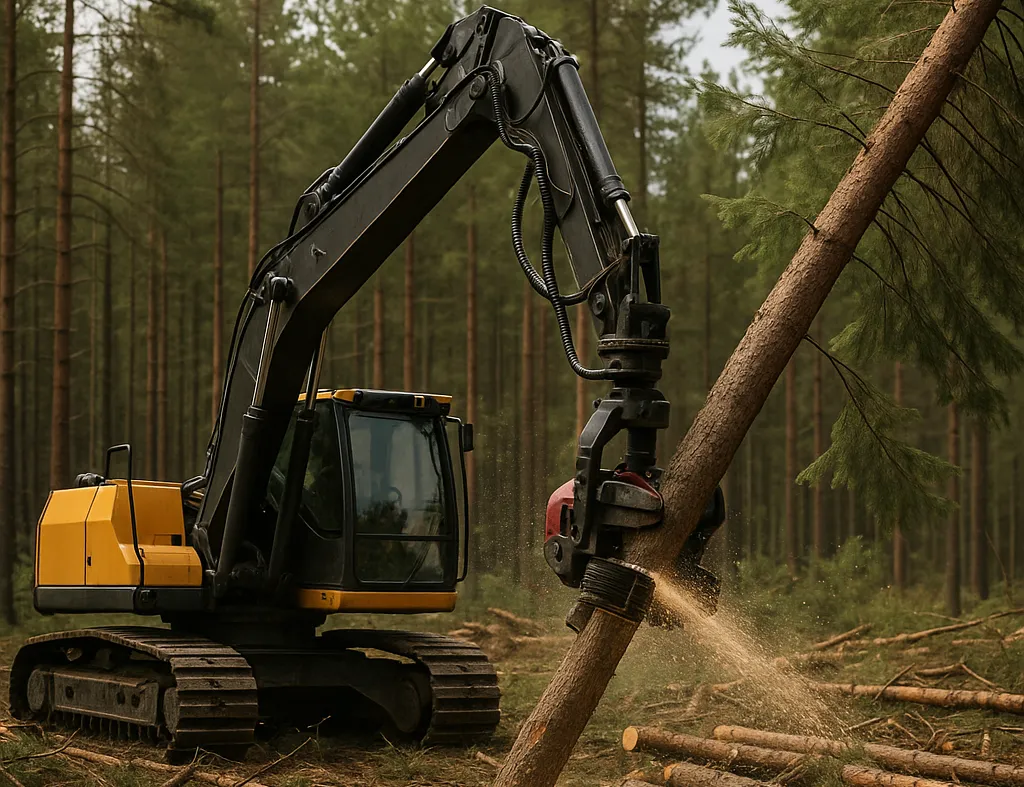
Harvesting Equipment Financing
Harvesting Equipment Financing: Buy, Lease, or Sale-Leaseback?
For farm, forestry, and milling operators generating more than $3 million in annual revenue, harvesting equipment is both the backbone of the business and one of its largest capital expenses. When it comes time to expand capacity, upgrade machinery, or free up cash, owners are faced with a key financial decision: purchase outright, enter into an operating lease, or structure a sale-leaseback.
Each path has its merits—let’s break them down.

The Case for Purchasing Outright
Owning equipment outright provides long-term control. Once paid for, there are no recurring lease payments or finance charges. You build equity in the asset, and depreciation schedules allow tax deductions over time. For highly utilized, mission-critical assets like combines, harvesters, or sawmill lines—machines that will remain essential for decades—ownership can make strong financial sense.
Benefits:
Long-term cost efficiency if the equipment has a long, productive life.
Equity value remains on your balance sheet.
Tax benefits through depreciation.
Flexibility to use, modify, or resell equipment without lease restrictions.
The Power of Operating Leases
Leasing, in many ways, is like renting your harvesting fleet. With an operating lease, the lessor retains ownership, while you pay a set fee for use. Historically, these leases were off-balance sheet, keeping liabilities light—a real advantage when weather or commodity pricing delivers a weak harvest. Even though new accounting standards now capitalize long leases, they still provide flexibility and protect cash flow.
Why it matters for operators:
Payments are typically fully deductible as operating expenses.
Avoid tying up cash or credit lines in depreciating assets.
Ability to upgrade to advanced equipment every few years without worrying about resale value.
Keeps your balance sheet “lighter,” which matters for financing future land, crop, or infrastructure investments.
When unpredictable weather threatens revenue, the lighter obligations of a lease help you preserve financial resilience.
Unlocking Capital with Sale-Leaseback
A sale-leaseback allows you to sell harvesting or milling equipment you already own to a capital provider and immediately lease it back. You get a lump sum of cash up front, while retaining uninterrupted use of your machinery.
This strategy is especially attractive if you want to:
Free up working capital to buy more acreage, expand storage, or invest in new technology.
Restructure your balance sheet by converting hard assets into liquidity.
Hedge against downturns—cash in hand can cover operating expenses during weaker harvest cycles.
Think of it as harvesting the value of your equipment today, while still running your operations tomorrow.
Which Path Fits Best?
Buy outright if you plan to use the equipment heavily for many years and want to build equity.
Lease if you value flexibility, lighter financial commitments, and the ability to keep upgrading to the latest models.
Sale-leaseback if you already own equipment and want to unlock trapped equity for growth or stability.
Growing Beyond the Harvest
Advanced harvesting and milling equipment drives efficiency and scale—but financing decisions drive resilience and growth. Whether you want to stabilize cash flow, upgrade to automation, or position your business for expansion, the right capital structure can make the difference.
👉 If you’re an owner-operator generating over $3 million in revenue, Compare Private Capital can help you evaluate whether a purchase, lease, or sale-leaseback is right for your operation.